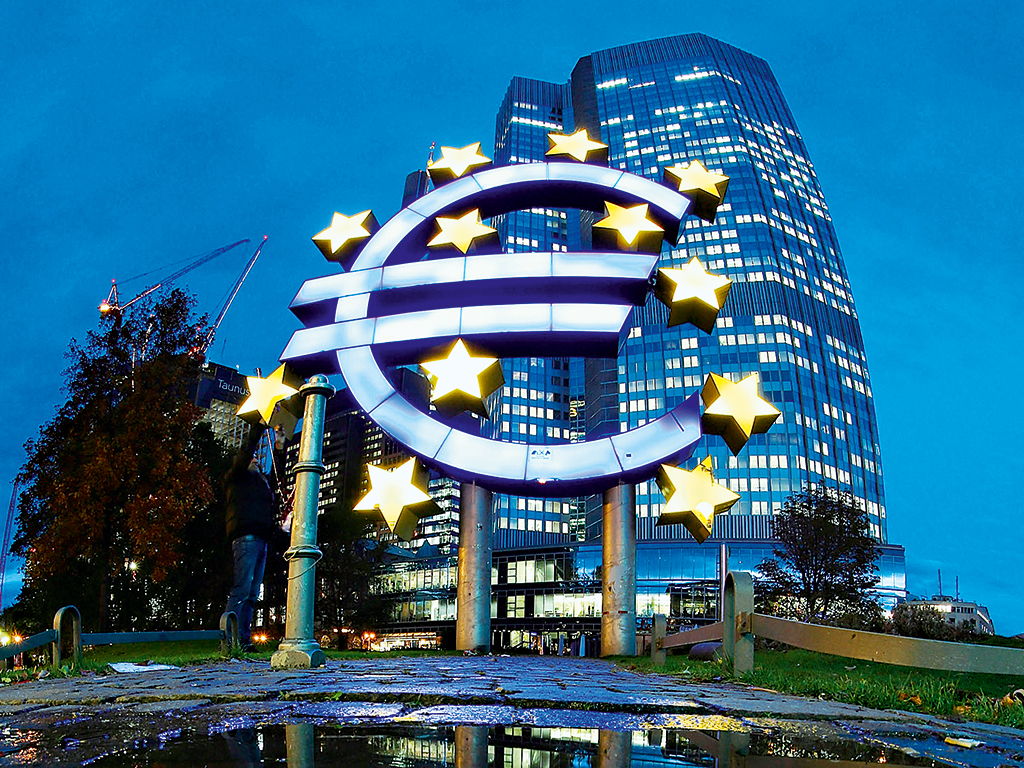
In early June, the ECB took the unprecedented step of imposing a negative interest rate on banks for their deposits. The move is a first for any major institutional bank and will, in effect, charge lenders to park money with it. Having only been tested in smaller economies, the next few months could prove a crucial test of this daring monetary policy.
The ECB cut the rate on its deposit facility for banks from zero percent to minus 0.10 percent. It came as part of a series of measures to combat the eurozone’s increasingly low and growth-stunting inflation, and to boost the region’s stuttering economic recovery.
With weak economic recovery in Europe and growing concerns over high unemployment, such drastic measures were certainly necessary
By slashing interest rates and bringing them into unchartered negative territory, ECB President Mario Draghi is hoping to force banks into lending again and thereby see an inflow of funds to businesses and households. This, again, could boost spending, create jobs and better the overall European economy.
Uncertain outcomes
Negative rates have only been applied in very few cases, albeit with some effect, in Sweden and Denmark. With high interest rates typically a sign of a strong economy, the theory is that negative interest rates can turn around a situation of financial or economic stress. With weak economic recovery in Europe and growing concerns over high unemployment, such drastic measures were certainly necessary.
As European banks are continuously declining loans to the private sector, the negative rate might encourage banks to lend more. The potential downfall is that such rates impose a cost on banks, which might affect their profitability. Janet Yellen, Chair of the Board of Governors of the Federal Reserve System, has even said the closer the deposit rate is to zero, the bigger the risk of disruption to the money markets.
There’s therefore a risk that the policy might do more harm than good. In Denmark, for instance, commercial banks didn’t pass on the negative rates to depositors for fear of losing customers. But when banks absorb the costs themselves, it diminishes the profit margin between their lending and deposit rates, and might make them even less willing to lend.
False hope
There’s no guarantee a negative deposit rate will change growth estimates to the extent that the ECB wishes. Nordea analysts said in a recent market outlook that they “consider the economic effect to be too small, and would not change our forecast of a slow, uneven and fragile Euro-area recovery with GDP growth attaining one percent in 2014 and 1.5 percent in 2015”. Nevertheless, other analysts said the ECB move could turn sentiment in the current post-crisis environment.
In truth, the impact of negative interest rates is uncertain. Proceeding with this move underlines the ECB’s concern and the need for drastic measures to turn around the European economy.
With negative rates, Draghi has done everything short of quantitative easing to boost the eurozone. This is good news for the financial markets, but no one knows what the negative interest rates will do. It sounds attractive in theory, but it could have unpredictable and unintended consequences. Only time will tell whether the outcome of negative rates will in fact be positive.

